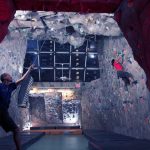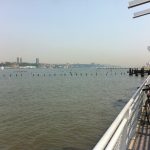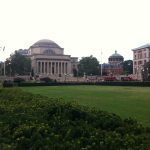Nothing quite brings inequality into focus quite like a natural disaster. The poor are overwhelmingly impacted by natural disasters and little has been done to improve their resiliency. There is hope, however. Information and communication technology (ICT) enabled and community-led development projects have begun to address issues of relief, recovery, and resiliency for the most vulnerable in New York City.
Hurricane Katrina showed us the racial nature of poverty in New Orleans and how inequality affects our ability to cope with natural disaster. According to a Congressional Research Services report, the hurricane “disproportionately impacted communities where the poor and minorities, mostly African-Americans, resided.” Simply put, poorer communities lack the resources to evacuate and prepare for storms, and are more likely to be located in areas that are vulnerable to disaster.
Hurricane Sandy was no different – again the poor were the hardest hit by the disaster, but the response by government was decidedly better – though not perfect. Community organizations, churches and even next-door neighbors rallied to fill gaps in the government response.

The OccupySMS map was intended to facilitate “mutual aid” connecting volunteers who happen to be in the neighborhood with individuals with specific needs.
One of the most successful ICT enabled projects launched in the aftermath of Hurricane Sandy was a project supported by Occupy Sandy Recovery – an offshoot of the inequality advocacy group Occupy Wall Street. The group developed a platform called “OccupySMS” to facilitate “mutual aid,” by connecting people with a need to volunteers offering assistance in a specific area. The application utilized an existing platform called Mobile Commons, allowing users to request donations or assistance and matching those requests to nearby volunteers via SMS. The service was specifically intended to fill individual household needs that were not being met by government-operated aid distribution centers.
Occupy Sandy’s efforts did not end with the recovery efforts. The organization followed through by creating an incubator of sorts to promote projects that address the long-term relief, recovery and resiliency of the communities affected by Hurricane Sandy.
The directory of projects includes both social and technological projects to improve coordination in the event of another natural disaster. FLO Solutions, for example, aims to help organizations implement free and open-source technology that will make it easier for them to share knowledge and data in a disaster situation. By networking non-profit, community and relief organizations together, the project facilitates the sharing of actionable information, such as requests for supplies and volunteers.
Occupy Sandy isn’t the only organization in New York that is fostering creative and technology-based solutions to issues of inequality. Code for America’s betaNYC Meetup calls itself “America’s largest civic technology and open government community.” By supporting civic technology startups and open government initiatives the organization hopes to “solve 21st Century civic problems … improving the lives of all in New York City.”
Inequality remains a huge problem in New York City, but with the help of civic organizations like Occupy Sandy and betaNYC we can make our city more resilient to natural disasters and ensure that the most vulnerable members of our community are not forgotten.





